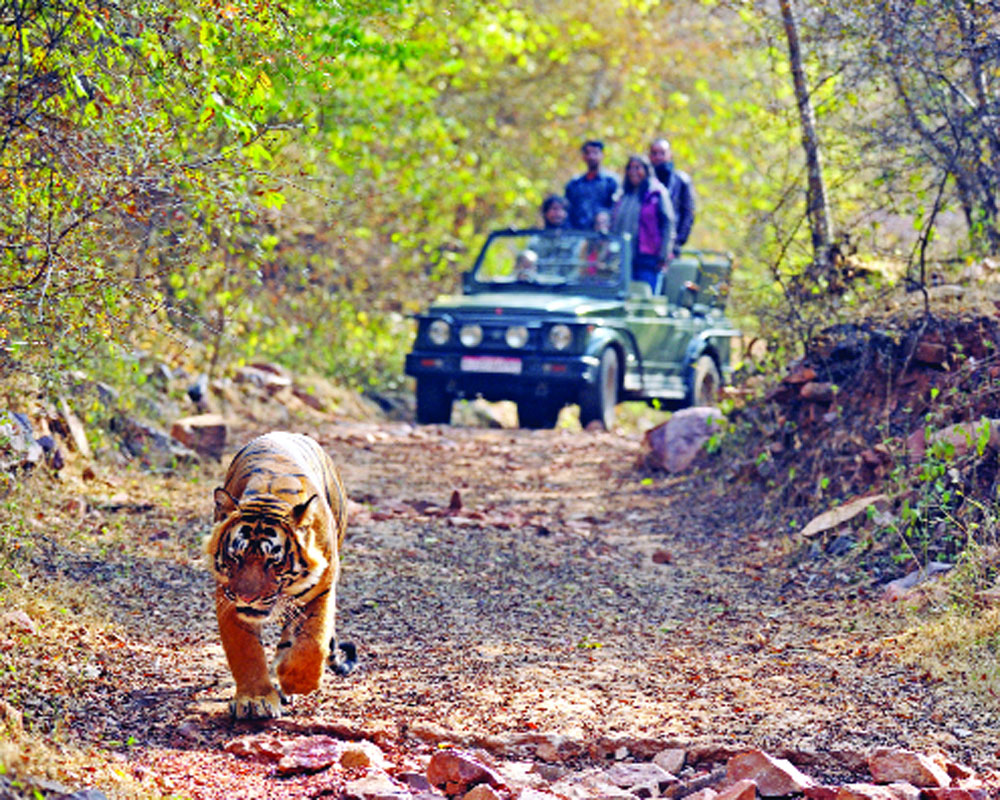For tiger conservation to work, we need to work on an inclusive model where the surrounding communities are a part of the programme, believes Raghu Chundawat. By Chahak Mittal
Do you remember the last time you went on a Jungle Safari or to a National reserve park or a wildlife sanctuary and spot a tiger passing by or even resting in its den? Hardly does that happen today, isn’t it?At the most, it is the pug marks that we encounter. As the studies have shown, the majestic tiger is on the verge of extinction. And there could be no bigger evidence than the absence of tiger spotting. However, India’s national reserves and ecologists are doing their bits to preserve this national animal.
Renowned conservation biologist and Tiger ecologist, Dr Raghu Chundawat launched his new research study on Ranthambhore National Park at the TOFTigers Wildlife Tourism Awards at the British High Commissioner’s residence called The value of Wildlife Tourism in Ranthambore Tiger Reserve. The study, over 15 years since the threats of extinction of the tiger had begun, touches upon different aspects of tiger conservation.
The report spoke volumes about the finances involved in the park and how the local community benefits from the same.
It highlighted how Ranthambore National Park has been raising the number of tigers so that the total reached close to 70 spread across the restored area as well as catering to the visitors every year without causing any recurrent harm to the species.
The park earned around Rs 19.7 crore in 2016- 2017 which is more than what it has received from both the state and the central government in the year which shows that it is self-sufficient.
It also highlighted how wildlife tourism has changed its course in India over the years. However, as Chundawat points out, there is one problem associated with wildlife tourism in India which is that “wildlife tourism is not promoted well in the country.”
The study shows nature tourism as one of the United Nations Sustainable Development tools and that 70 per cent of the jobs in the field are created from the surrounding local communities (90 per cent from the entire state of Rajasthan) while 55 per cent of all tourism revenues stay within the local area. The implications are many including the fallacy of the argument that nature tourism only benefits the rich and its visitors since it can ensure a nature-friendly neighbourhood on the borders of parks.
Chundawat feels that it is important to hold such events and initiatives to motivate wildlife tourism across the country and even internationally, he says, “These are basically created to promote good practices in wildlife tourism. The more of these, the better it is as it creates more awareness. Currently there are only one or two such initiatives that I know of but there should be more. We should have responsible tourism which will encourage these events.”
The night also saw awards being given away to people who have contributed immensely to wildlife tourism and other conservation initiatives. Chundawat believes that these awards are important. “Why shouldn’t they be awarded? They definitely should be. They put up in ecologically sensitive areas to encourage other properties to be more responsible, develop sustainable tourism with a lighter carbon foot print. We want to encourage them. The resorts are very ethical in terms of conservation. That’s why we give the award to only those people and expect that the industry will promote such causes in order to make encourage others to start following it. Internationally, it creates a market and works on a global platform.”
Chundawat says, “The change is happening very slowly. In India people are complicated and think twice about everything so it’s not very easy to move forward. There are diverse perspectives but we need to take everybody together. It’ll take time but things are moving in the right direction though at their own pace.”
In order to increase such initiatives he says a number of steps need to be taken. “We have a huge potential and to utilise it properly we need to work on an alternative model. We are dependent on an exclusionary model where 6 per cent of the forest areas are included and more than 90 per cent tiger habitats are excluded. We cannot create every area as a tiger habitat or protected area for tigers and throw everybody out of their homes. We need an inclusionary model where the surrounding communities are involved. We need different conservation models. We should have hundreds of conservation models to ensure that at least half of them will work. And then we can decide which is the best one to use repeatedly. We need alternatives as one model might not be successful. With alternatives you have different options on which you can work. If plan A doesn’t work, plan B will.”
Well, Chundawat’s driving force towards such immense initiatives is the great Indian tiger. He tells us, “Tiger is now found only in 6 per cent of their original habitats. The number has reduced drastically. The range restrictions is the first sign of extinction. Our attempt should be to increase the range. Tigers should occupy all the areas. Without tiger-friendly communities tigers cannot survive. This is what drives me wake up every morning to head to the jungle.”
He applauds at the achievement stating, “This is a great conservation success story. Tigers are doing really well, and tourism is positively benefitting in ensuring it. Unlike the usual negative perception of tourism, it is infact an important conservation tool, creating funds for park protection, generating sustainable jobs and new livelihood opportunity, raising living, health and educational standards and decreasing forest dependency and best of all — not harming tigers. Well done, Ranthambhore.”


























